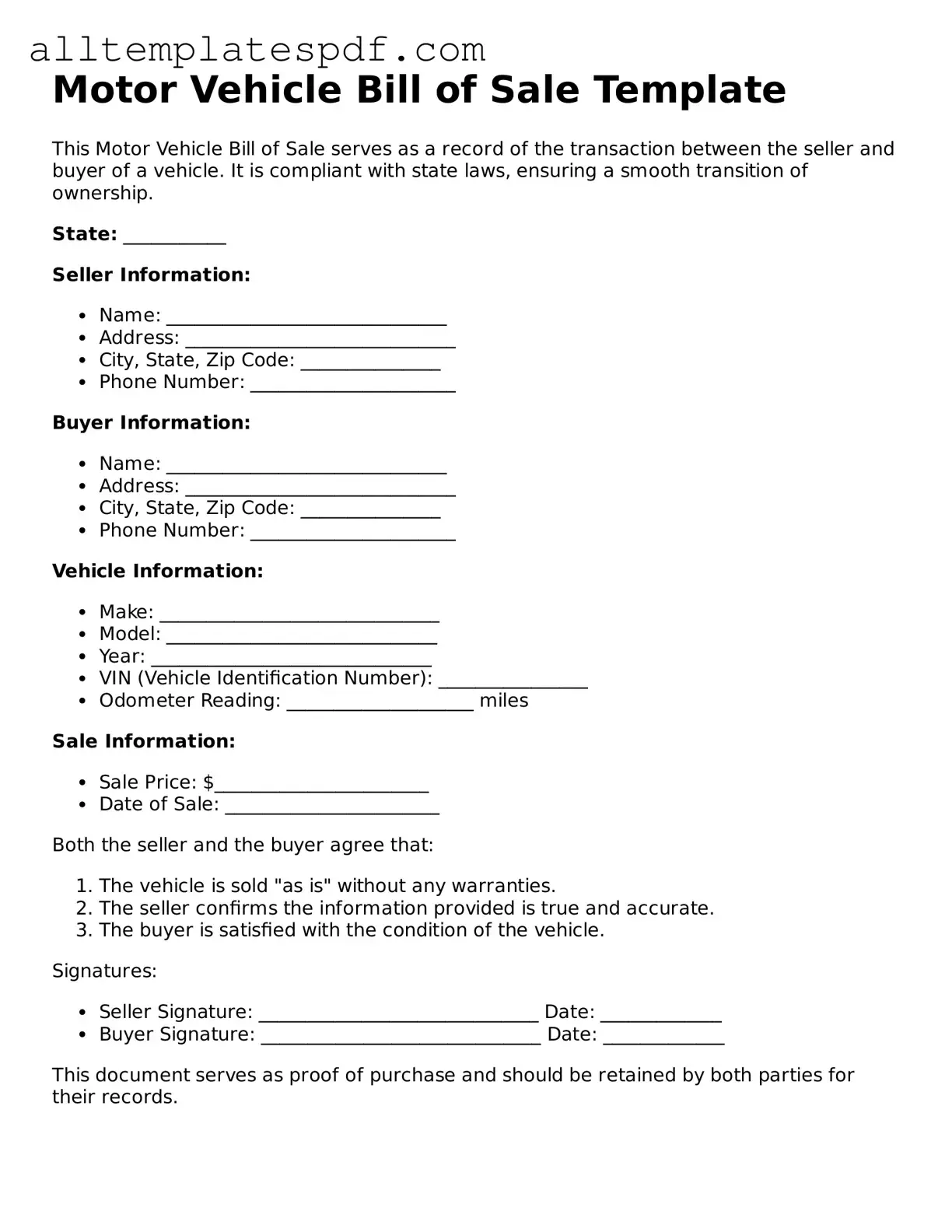Completing a Motor Vehicle Bill of Sale form can be straightforward, but many individuals make common mistakes that can lead to complications later. One frequent error is failing to provide accurate vehicle information. This includes details such as the vehicle identification number (VIN), make, model, and year. Inaccuracies can create confusion or disputes about ownership.
Another mistake often seen is neglecting to include the sale price. Leaving this field blank or entering an incorrect amount can raise questions during the registration process or when calculating taxes. It's important to clearly state the agreed-upon price to ensure a smooth transaction.
People sometimes forget to include both the buyer's and seller's information. This includes names, addresses, and signatures. Omitting any of this information can render the document incomplete, which may affect its validity in legal situations. Each party should ensure that their details are accurately recorded.
Additionally, failing to sign the form is a common oversight. Both parties must sign the Bill of Sale to confirm the transaction. Without these signatures, the document may not be recognized as a legitimate record of the sale, potentially leading to disputes over ownership.
Lastly, some individuals overlook the importance of keeping a copy of the completed Bill of Sale. After the transaction, it is advisable for both the buyer and seller to retain a copy for their records. This document serves as proof of the sale and can be crucial for future reference, especially if any issues arise.
